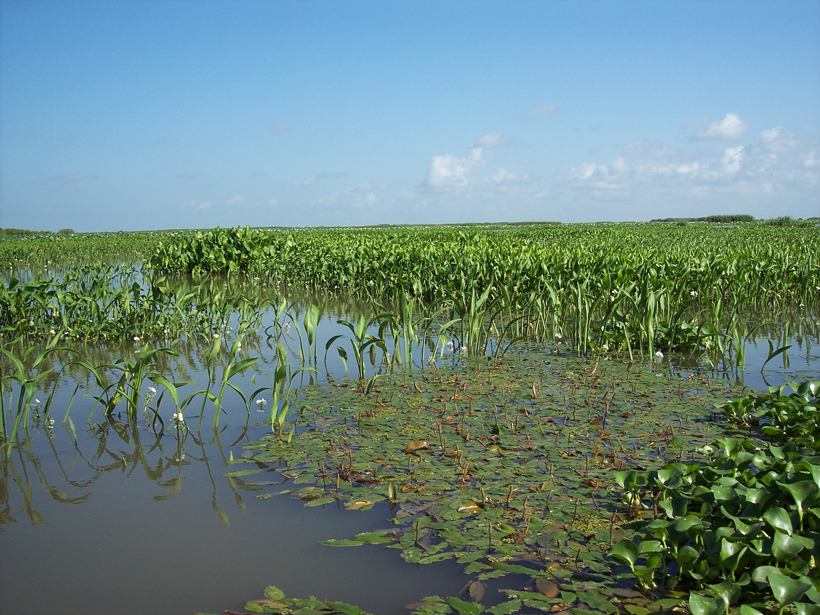Source: Journal of Geophysical Research: Earth Surface
Sea level rise threatens coastal populations around the world. To combat this threat, some communities have employed—or plan to employ—a controversial technique in which rivers are diverted to build new coastal land as deltas. By replenishing lost land, these efforts seek to protect against coastal flooding and create new wildlife habitat.
The success of river diversions relies, in part, on plants. Depending on their density and placement, plants may promote or hinder sedimentation in river deltas. However, past research into these effects has been limited, and it has often relied on the assumption that floods are the major drivers of landscape change.
To gain better insight into plants’ influence on delta development, Piliouras et al. used a laboratory setup to mimic delta dynamics. They fed a mixture of water and sediment into one end of a 3-meter-long basin and examined the effects of plants and flow patterns on the development of an artificial “delta” in the basin.
First, they seeded the sand with alfalfa seeds and exposed it to 1-hour “floods” of water and sediment once per week for 10 weeks. Compared to a control setup with no alfalfa, these conditions increased sediment buildup, thanks to drag the plants exerted on the flow. However, plant drag also inhibited formation of channels in the sand, preventing new channels from developing to deliver sediment to the downstream “shoreline” of the setup.
In the next experiment, the research team exposed the alfalfa-seeded sand to a 1-hour flood of sediment and water followed by 2 hours of just water flowing at 40% of the flood volume. They found that this fluctuating flow worked in tandem with the alfalfa to balance vertical sediment buildup with horizontal extension of the delta at the shoreline.
Specifically, the 2-hour nonflood flow limited plant establishment, thereby enabling the formation of channels in the sand. In areas without alfalfa, the flow removed the topmost layer of sediment and delivered it to the shoreline. Then, the 1-hour floods filled in the channels with sediment, resulting in both horizontal delta growth and vertical buildup, which was further enhanced by the alfalfa.
The researchers concluded that nonflood flow is likely an important factor in delta formation. Following these results, they propose that future efforts to model delta formation should incorporate fluctuations between floods and nonflood flow, which are often found in natural environments. (Journal of Geophysical Research: Earth Surface, https://doi.org/10.1002/2017JF004378, 2017)
—Sarah Stanley, Freelance Writer
Citation:
Stanley, S. (2017), Nonflood flow may be major driver of delta growth, Eos, 98, https://doi.org/10.1029/2017EO086851. Published on 12 December 2017.
Text © 2017. The authors. CC BY-NC-ND 3.0
Except where otherwise noted, images are subject to copyright. Any reuse without express permission from the copyright owner is prohibited.

